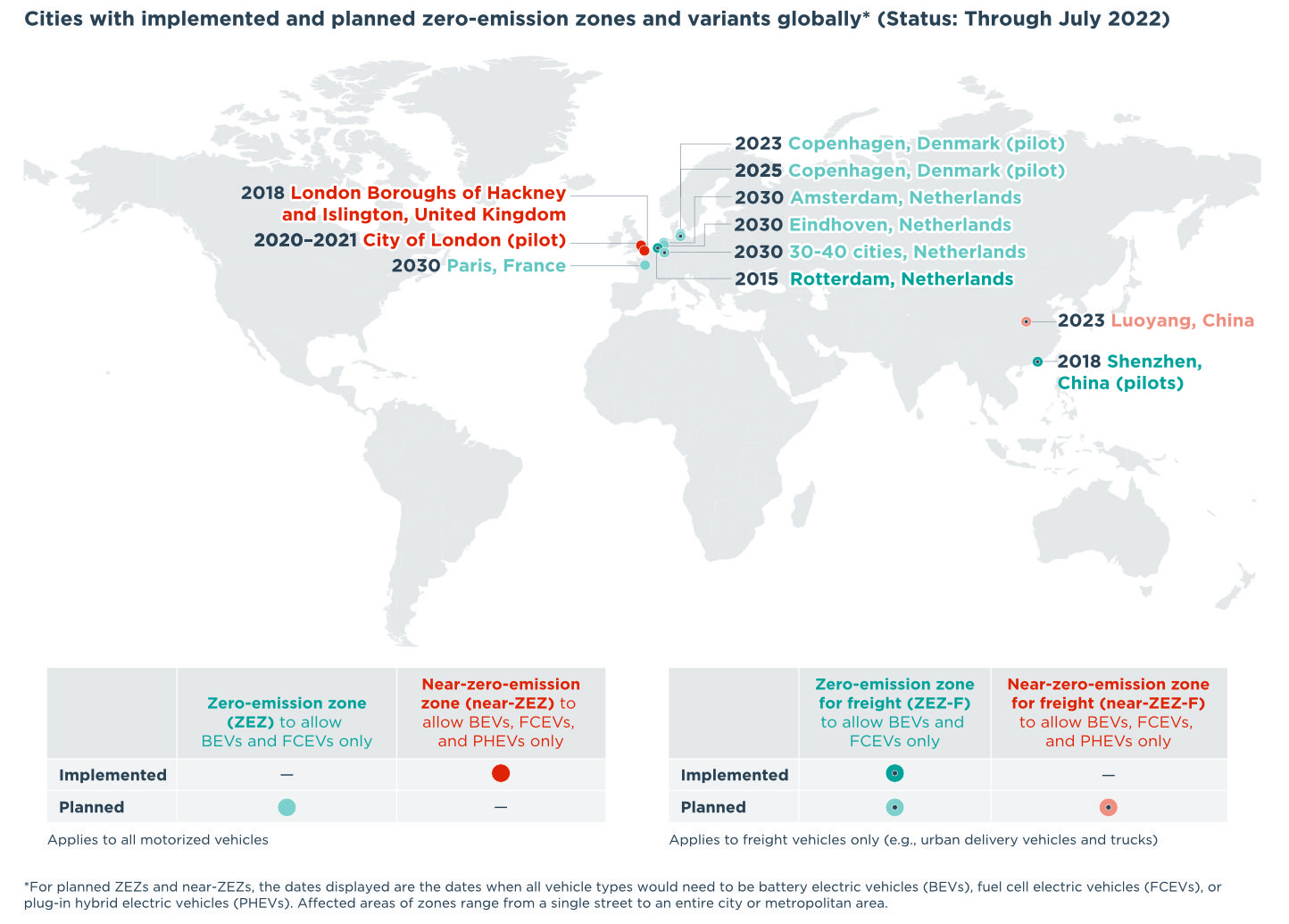A global overview of zero-emission zones in cities and their development progress
Briefing
Update on zero-emission zone development progress in cities
This is an update to a paper from last year that introduced zero-emission zones (ZEZs), areas where only battery electric vehicles and fuel cell electric vehicles, pedestrians, and cyclists are granted unrestricted access. While low-emission zones (LEZs) have been established for a while, particularly in European cities, ZEZs are even more progressive and seek to improve local air quality, limit congestion, and help spur the decarbonization of the vehicle fleet. With this update, we begin to establish some criteria to separate robust ZEZ schemes from others that might only share some commonalities. To qualify for inclusion in the map below, cities must have made a commitment to the ZEZ or variant as part of an official policy document or announcement, set a start date for the zone, and specified the vehicle types affected; there must also be binding requirements.
As you can see, most examples exist in Europe, but some cities in China have implemented or are planning to implement ZEZs or near-ZEZs, most with a focus on freight vehicles. We also find that ZEZs typically start as pilots or advance from existing LEZs, and that legal frameworks are an important precondition for establishing such zones. Finally, making equity considerations an integral part of the decision-making process is not only important on its own, but is also likely to increase public acceptance of ZEZs.

Figure. Cities with implemented and planned zero-emission zones and variants globally.
